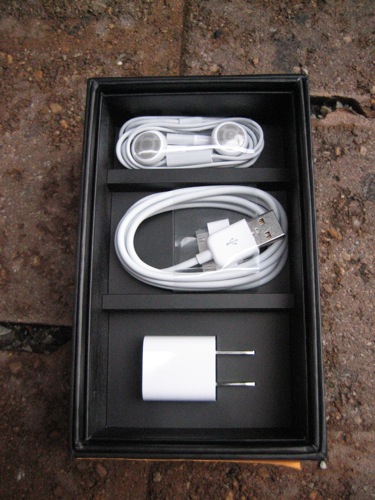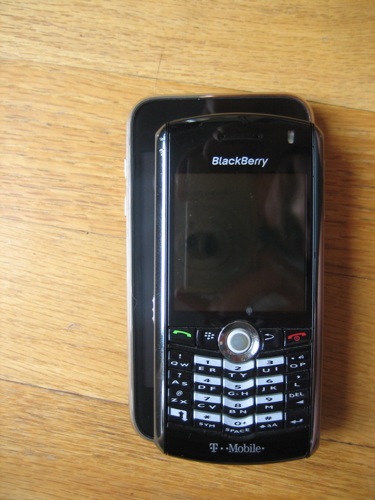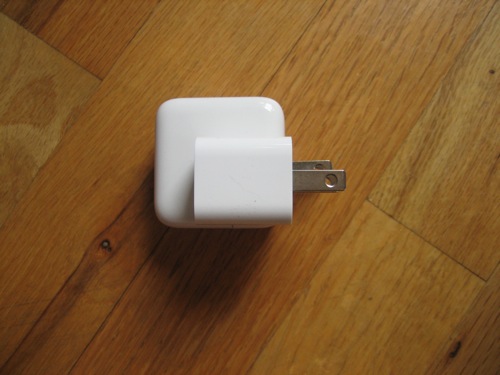iPhone Parousia
 iPhone 3G
iPhone 3G
Manufacturer: Apple (product page)
System requirements: Macintosh computer running Mac OS X 10.4.10 or later, USB 2.0 port, iTunes 7.7; Windows PC running Windows Vista or Windows XP SP2, USB 2.0 port, iTunes 7.7
Price: US$199 (8GB), US$299 (16GB) with new two-year contract in the US, $399/$499 unsubsidized for existing AT&T users. Worldwide prices vary depending on country and carrier.
Buzz about the next version of the iPhone began before even the original iPhone was released just over a year ago. Although the EDGE-capable "2G" iPhone ended up being a smash success during its one-year reign, critics wanted a 3G version from the very beginning. And so Apple giveth. Even though the iPhone 3G may not seem much different than its predecessor to the average person on the street, that didn't stop the Apple RDF from permeating excited customers' brains as iPhone Launch Day 2.0 drew near.
Unfortunately, most of us know what happened on Launch Day 2.0. Activation woes galore turned what could have been a hype-worthy day that surpassed the original iPhone launch into a headache for pretty much everyone involved—and not just in the US, but across the entire world. Whether this affected Apple's first-day sales in any significant way we will probably never know. However, launch day is just one day, and things appear to have smoothed out since then. Customers lined up down and around the block for days in a row after the launch, making the iPhone 3G launch apparently far more successful than the original iPhone's launch.
In this review, we take a long, hard look at the iPhone 3G, both as a consumer device and as an enterprise device. After all, part of the appeal of the new device is that a number of software improvements have finally made it enterprise-ready, or so claims Apple's marketing. From a business user's point of view, however, if you think that the iPhone is a drop-in BlackBerry replacement, think again.
Unboxing and accessories
The iPhone 3G's box is nearly identical to the iPhone 2G's box in every possible way. Every dimension and every color, down to the way the top slides off of the bottom to reveal the iPhone laying on top of a packet containing the microfiber cloth and documentation, which in turn lifts off to reveal the accessories—it's all the same, except for the "3G" printed on the side of the box.

Contained within the accessory reservoir are a pair of iPhone headphones, an iPhone/iPod USB cord, and a USB-compatible power brick.

Faithful readers may remember our observations from last year, when we snapped a photo of the accessories included with the original iPhone (which included all of the above, plus a dock). "[T]his many accessories may or may not continue to come included in the box as future iPhone generations get released. As one commenter aptly observed in the discussion about Infinite Loop's iPhone unboxing photos, 'Look at all those accessories. I can't wait for the 3rd or so generation iPhone that comes with a phone and a cable.'" It certainly looks as if Apple has begun down the path of fewer included accessories with the iPhone 3G. Sometimes, it just sucks to be right.
If you want a dock for your iPhone 3G (which we, personally, consider important to us), then you'll either have to buy an iPhone 3G dock separately from Apple for $29, or buy the $9 iPhone 3G Universal Dock adapter (for use with your Apple Universal Dock, if you have one).
Meet the new iPhone, same as the old iPhone
The iPhone 3G is available in 8GB and 16GB form, and with either black or white backings (the front is black for everyone). Only the 16GB version is available in both black and white, while the 8GB version is only available in black. We have had many people ask us what our opinions are on white versus black (although it appears that the masses, in general, prefer black). Black seems to look slicker overall, but it's extremely finger-printy and it displays imperfections (smudges and scratches) much more than white does. White might get a little dirty, but, just as was the case with the old black and white plastic iPods, white tends to hide imperfections better. Ultimately, this choice comes down to personal preference.
The iPhone 3G is 4.5 inches tall, 2.4 inches wide, and 0.48 inches thick with a 3.5 inch (diagonal) screen—almost exactly identical to the old iPhone, which was 0.46 inches thick. However, the difference in thickness is practically invisible, thanks to Apple's slight refinement of the shape of the back casing. The back side of the iPhone now tapers towards the edges of the device, making it seem thinner in the hand than the old iPhone despite its extra thickness. Maybe the old iPhone is just big-boned.

EDGE iPhone on the left, iPhone 3G on the right


As you can see, the back of the new iPhone is also now plastic instead of metal. This change shaves 0.1 ounces off the weight of the device, to 4.7 ounces, which is surprisingly noticeable when holding the iPhone. Even though the weight difference from the original iPhone seems noticeable, the device still feels good to hold and pocket, and it doesn't feel cheap or empty. And, although it's still heftier than some competitors—like the Motorola Q, which weighs in at 4.0 ounces, and the BlackBerry Pearl at 3.2 ounces—the weight is once again considered a non-issue by all of the Ars Technica reviewers. Speaking of the BlackBerry Pearl, here are a couple of size comparison photos:


There are other, very minor differences in the iPhone 3G's accessories compared to the original set. Apple changed the shape and reduced the size of the miniature power brick that comes with the iPhone, making it not quite so smooth, but definitely more compact.

New on the left, old on the right

New power plug on top
The iPhone headphones have also pretty much stayed the same. They are still a slightly modified version of iPod headphones, except with a built-in speaker/clicker on the cord to the right earbud so that you can hold phone conversations over the headphones and control your music. After spending roughly the past year using this functionality built into our iPhone headphones, we find it hard to function without them. The iPhone 3G's headphones, however, gain about one inch in length from the old iPhone's headphones:

Of course, there are some third-party headphone solutions if you're interested in a different audio experience than the one Apple offers while still preserving the clicking and audio-in features. We tested out a pair of Skullcandy iPhone headphones at Macworld 2008, for example, and found them to offer better audio quality than Apple's. We'll speak more about audio quality on the iPhone 3G later in the review.
reader comments
0